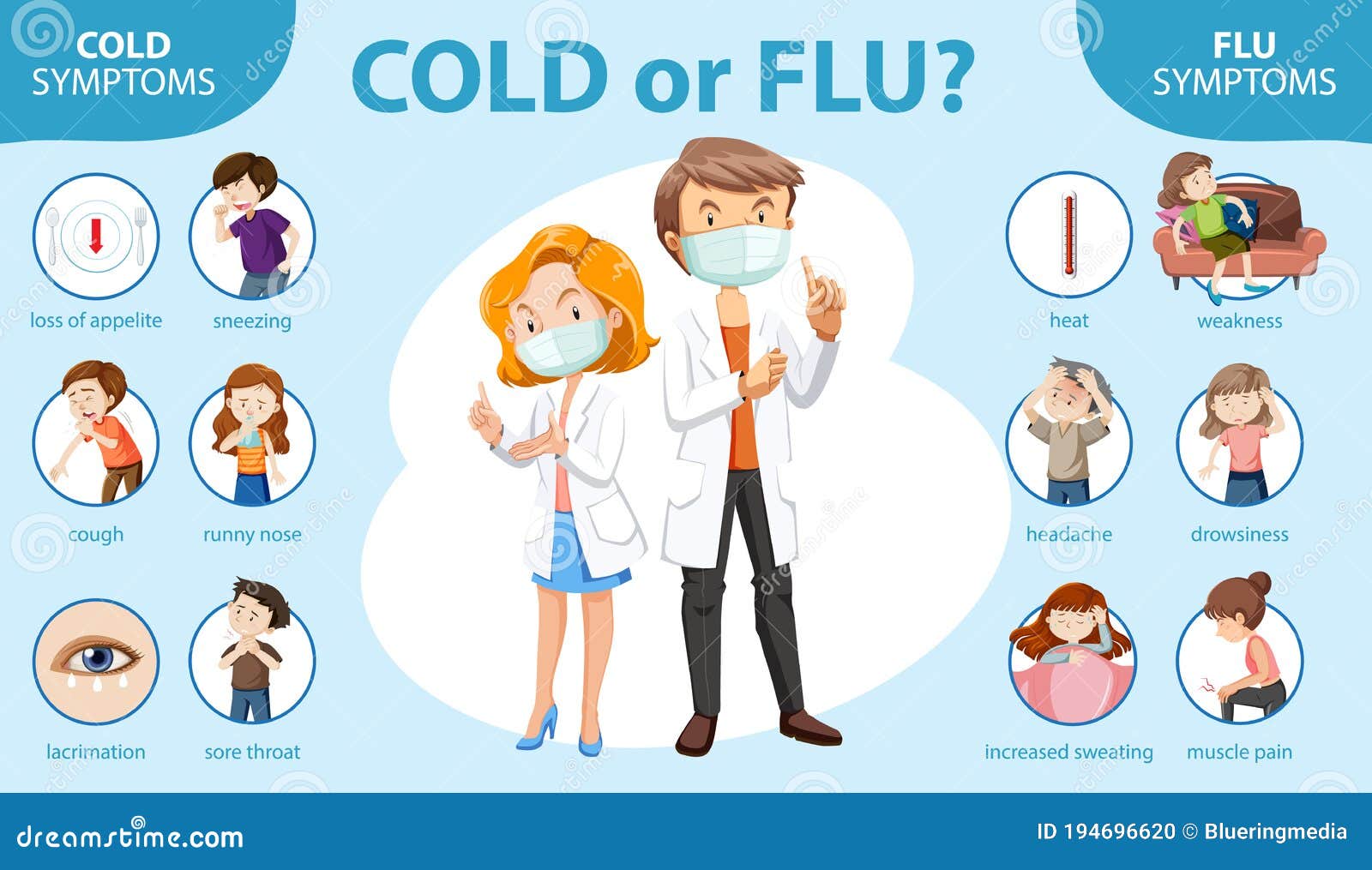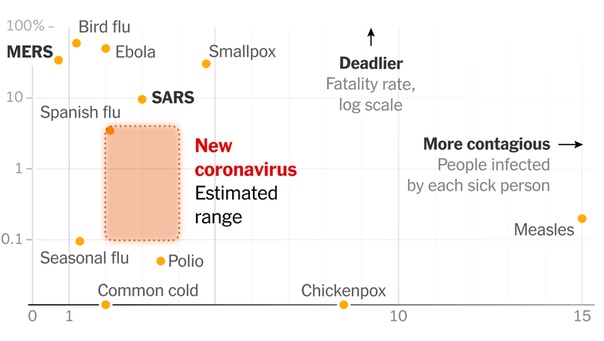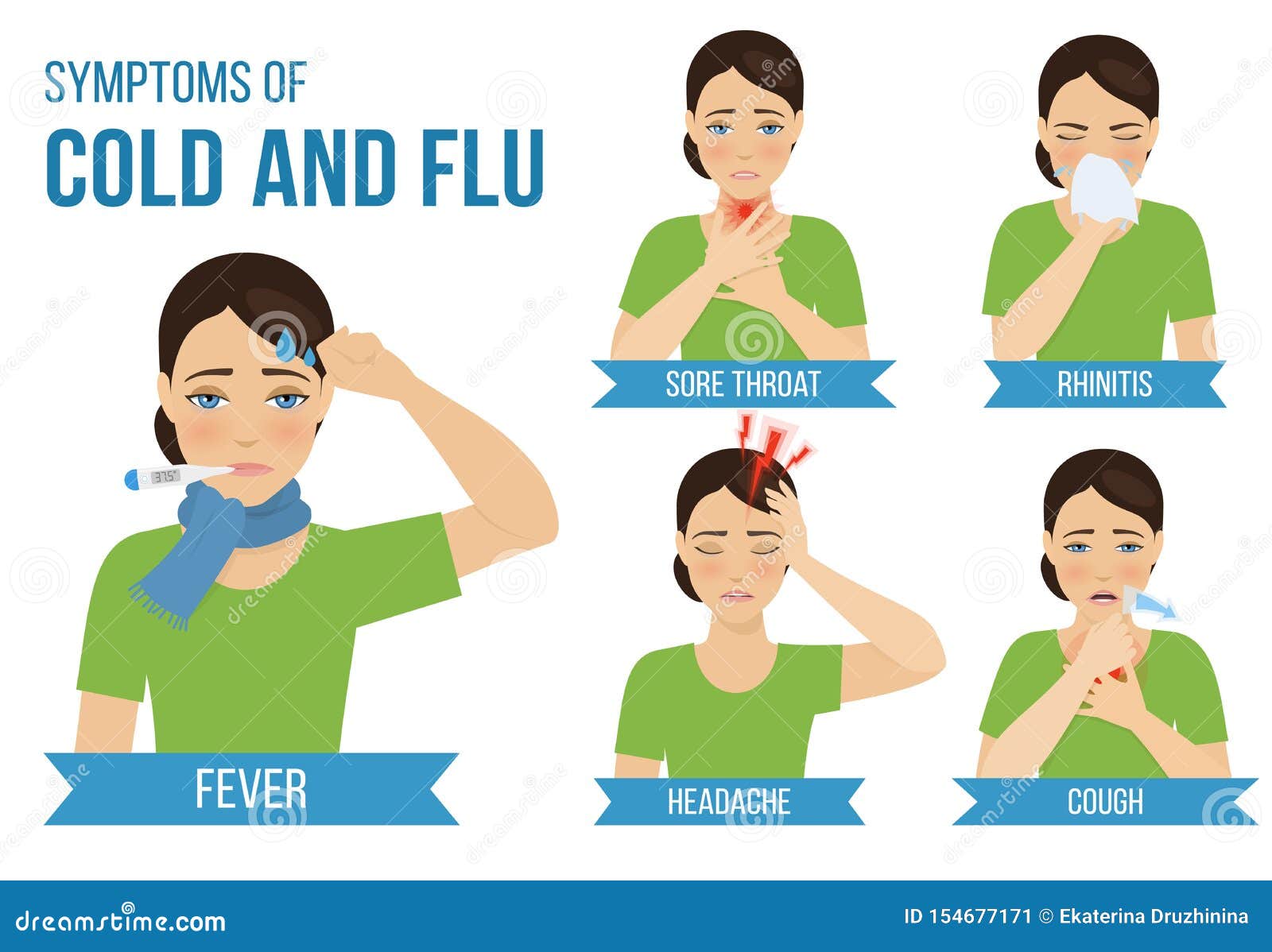Phases of the flu. Comprehensive Guide to Flu Stages: Duration, Symptoms, and Recovery
How long does the flu typically last. What are the main stages of influenza infection. When do flu symptoms peak and start to improve. How can you differentiate between flu and COVID-19 symptoms.
Understanding the Timeline of Influenza Infection
Influenza, commonly known as the flu, is a highly contagious respiratory illness that affects millions of people each year. While the duration can vary, most healthy individuals experience flu symptoms for 3-7 days. However, some symptoms like fatigue and cough may persist for up to two weeks. Let’s explore the typical progression of flu symptoms day by day.
Day 0: The Asymptomatic Carrier Stage
Did you know you can be contagious before showing any symptoms? This initial stage, known as Day 0, is when an infected person can unknowingly spread the virus while feeling completely fine. The virus typically incubates for 1-4 days after exposure before symptoms appear.
Days 1-3: Rapid Onset of Symptoms
The flu often strikes suddenly, unlike the gradual onset of a common cold. During the first three days, you may experience:

- Sudden high fever (usually above 100.4°F or 38°C)
- Severe headache
- Extreme fatigue and weakness
- Dry, persistent cough
- Sore throat
- Muscle aches and joint pain
These initial days are often the most severe, with symptoms reaching their peak intensity. It’s crucial to rest and stay hydrated during this period.
Day 4: Potential Symptom Relief
By the fourth day, some individuals may notice a slight improvement in their condition. The fever may begin to subside, and muscle aches might lessen. However, respiratory symptoms like cough and sore throat often persist. Fatigue remains a significant issue, and many people continue to feel the need for extended rest.
Day 5: Watch for Complications
For most uncomplicated cases of flu, day 5 marks a turning point towards recovery. However, it’s essential to remain vigilant. If fever persists or symptoms worsen, it could indicate a secondary infection such as bronchitis or pneumonia. These complications may require medical intervention, including antibiotics.

Day 6 and Beyond: The Road to Recovery
From day 6 onwards, most individuals start feeling noticeably better. Symptoms should gradually subside, though a lingering cough and fatigue may persist for up to two weeks. It’s important to continue resting and maintaining good hydration even as you begin to feel better.
Recognizing Flu Symptoms and Their Variations
While the flu often follows a predictable pattern, it’s important to note that symptoms can vary significantly from person to person. Some individuals may experience predominantly respiratory symptoms, while others might suffer more from systemic effects like fever and body aches.
Common Flu Symptoms Checklist
- Fever and chills
- Cough (usually dry)
- Sore throat
- Runny or stuffy nose
- Muscle or body aches
- Headaches
- Fatigue
- Vomiting and diarrhea (more common in children)
Is it possible to have the flu without a fever? While fever is a hallmark symptom, some people may have a milder form of the flu without experiencing a significant temperature elevation. However, the sudden onset of other symptoms, particularly extreme fatigue and body aches, can still indicate influenza infection.

Potential Complications of Influenza
For most healthy individuals, the flu resolves without serious complications. However, certain groups are at higher risk for developing severe, potentially life-threatening complications from influenza infection.
High-Risk Groups for Flu Complications
- Adults 65 years and older
- Children under 5 years old, especially those under 2
- Pregnant women and women up to two weeks postpartum
- People with chronic medical conditions (e.g., asthma, heart disease, diabetes)
- Individuals with weakened immune systems
What are the most common complications of influenza? Serious complications can include:
- Pneumonia (bacterial or viral)
- Myocarditis (inflammation of the heart muscle)
- Encephalitis (inflammation of the brain)
- Myositis (inflammation of muscle tissues)
- Multi-organ failure
- Sepsis
These complications can lead to hospitalization and, in severe cases, may be fatal. Prompt medical attention is crucial if symptoms worsen or persist beyond the typical recovery period.

Differentiating Between Flu and COVID-19
As we continue to navigate the COVID-19 pandemic, distinguishing between flu and COVID-19 symptoms has become increasingly important. While both are respiratory illnesses caused by viruses, there are some key differences in their presentation and progression.
Comparison of Flu and COVID-19 Characteristics
| Characteristic | Influenza | COVID-19 |
|---|---|---|
| Symptom onset | Abrupt (1-4 days after exposure) | Gradual (2-14 days after exposure) |
| Loss of taste/smell | Rare | Common |
| Contagiousness | Less contagious | More contagious, especially newer variants |
| Antiviral treatment | Available and effective | Limited options, primarily supportive care |
Can you have both flu and COVID-19 simultaneously? Unfortunately, yes. Co-infection with both viruses is possible, though relatively rare. This situation can lead to more severe symptoms and complications, emphasizing the importance of prevention through vaccination and hygiene measures.
2.gif)
Effective Strategies for Flu Prevention and Treatment
Preventing flu infection is always preferable to treating it. Fortunately, there are several effective strategies to reduce your risk of contracting influenza or minimizing its severity if you do become infected.
Annual Flu Vaccination
Getting an annual flu shot is one of the most effective ways to protect yourself against influenza. The vaccine is typically available starting in September and is recommended for everyone 6 months and older, with rare exceptions.
How effective is the flu vaccine? While efficacy can vary from year to year, flu vaccination has been shown to reduce the risk of flu illness by 40-60% among the overall population during seasons when most circulating flu viruses are well-matched to the vaccine.
Hygiene and Lifestyle Measures
- Wash hands frequently with soap and water
- Use alcohol-based hand sanitizers when soap isn’t available
- Avoid touching your face, especially your mouth, nose, and eyes
- Practice social distancing during flu season
- Maintain a healthy lifestyle with proper nutrition, exercise, and sleep
Treatment Options for Influenza
If you do contract the flu, several treatment options are available to help manage symptoms and potentially shorten the duration of illness:

- Antiviral medications (e.g., oseltamivir, zanamivir) if prescribed early in the course of illness
- Over-the-counter pain relievers and fever reducers (e.g., acetaminophen, ibuprofen)
- Decongestants and cough suppressants for respiratory symptoms
- Plenty of rest and hydration
When should you seek medical attention for flu symptoms? Contact your healthcare provider if you experience severe symptoms, belong to a high-risk group, or if your condition worsens after initial improvement.
Long-Term Effects and Recovery from Influenza
While most people recover fully from the flu within a few weeks, some individuals may experience longer-lasting effects or a prolonged recovery period.
Post-Influenza Fatigue
Fatigue is one of the most common lingering symptoms after a bout of flu. This exhaustion can persist for several weeks after other symptoms have resolved. Gradually increasing activity levels and maintaining good sleep hygiene can help combat post-flu fatigue.
Respiratory System Recovery
The flu can cause significant inflammation in the respiratory tract, leading to a persistent cough that may last for weeks. In some cases, this can evolve into post-viral reactive airway disease, a temporary condition similar to asthma.

Immune System Impact
Does having the flu weaken your immune system? Temporarily, yes. The influenza virus can suppress immune function for several weeks after infection, potentially increasing susceptibility to other infections during this period.
To support your recovery and boost your immune system post-flu:
- Maintain a balanced, nutrient-rich diet
- Stay well-hydrated
- Get adequate sleep
- Gradually reintroduce exercise as you feel able
- Consider supplements like vitamin C, vitamin D, and zinc (consult with a healthcare provider first)
Flu in Special Populations: Considerations and Risks
While influenza can affect anyone, certain populations face unique challenges and increased risks when it comes to flu infection and recovery.
Flu in Older Adults
Adults over 65 are at higher risk for severe flu complications due to age-related changes in immune function and the increased likelihood of underlying health conditions. For this group, flu vaccination is particularly crucial, and higher-dose or adjuvanted flu vaccines are often recommended.

Influenza During Pregnancy
Pregnant women are more susceptible to severe flu complications due to changes in their immune system, heart, and lungs during pregnancy. Flu vaccination is safe and recommended during pregnancy, protecting both the mother and providing antibodies to the baby for several months after birth.
Childhood Flu: Special Considerations
Children, especially those under 5, are at higher risk for flu complications. They may also experience different or more severe symptoms compared to adults, including:
- Higher fever
- More pronounced gastrointestinal symptoms
- Increased risk of febrile seizures
Annual flu vaccination is recommended for children 6 months and older. For children under 6 months, protecting caregivers through vaccination is crucial.
How can you tell if a child’s flu symptoms are severe? Seek immediate medical attention if a child experiences:
- Difficulty breathing or rapid breathing
- Bluish skin color
- Not drinking enough fluids
- Not waking up or not interacting
- Fever with a rash
- Symptoms that improve but then return with fever and worse cough
The Future of Flu Prevention and Treatment
As our understanding of influenza viruses continues to evolve, researchers are working on new approaches to prevent and treat flu infections more effectively.

Universal Flu Vaccine Research
Scientists are striving to develop a universal flu vaccine that would provide broad protection against multiple influenza strains, potentially eliminating the need for annual vaccinations. These vaccines target conserved parts of the virus that don’t change from year to year.
Advances in Antiviral Treatments
New antiviral medications are in development, aiming to provide more effective treatment options with fewer side effects. Some promising avenues include drugs that target the flu virus’s ability to replicate or spread within the body.
Improved Diagnostic Tools
Rapid, accurate diagnostic tests are becoming more widely available, allowing for quicker identification of flu infections and more timely treatment initiation.
What role might artificial intelligence play in flu prevention and treatment? AI is being explored for various applications, including:
- Predicting flu outbreaks based on social media and search engine data
- Assisting in the design of more effective flu vaccines
- Identifying individuals at higher risk for severe flu complications
As research continues, these advancements promise to enhance our ability to prevent, diagnose, and treat influenza infections more effectively in the future.
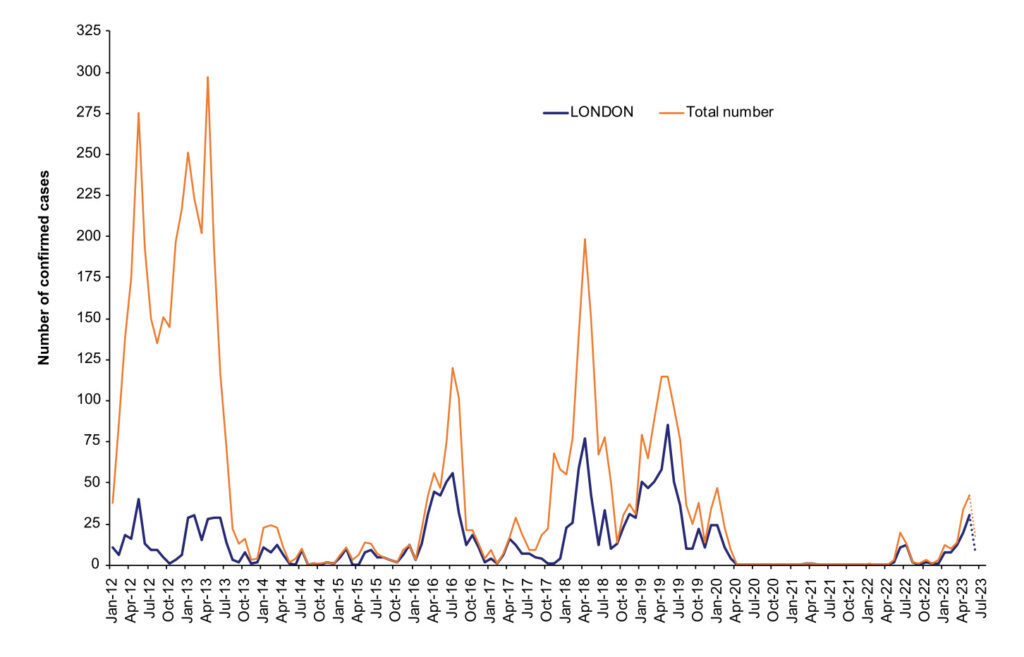
How Long Does the Flu Last? Here are the Stages of the Flu
There’s no getting around it: the flu is no fun.
No matter which stage of the flu you’re in, feeling better ASAP is a priority. That takes rest and time, of course.
When that first day of flu illness hits, it’s normal to wonder: how long is this going to last?
This post will provide details on daily symptoms, COVID vs. flu, and a timeline of what to expect as this common illness progresses.
Below, get a day-by-day timeline of how long you’ll feel crummy and tips for a faster recovery.
How Long Does the Flu Last?
So, how long does influenza actually last? Some people may answer with, “too long.”
While it may feel like an eternity when you’re sick, in reality, it’s between three to seven days, according to the Centers for Disease Control and Prevention. If you’re generally healthy, an uncomplicated case of the flu is short-lived, but a cough and weakness can last up to two weeks.
Stages of the Flu
Unfortunately, in most cases, you have to just ride out the flu. Even a day before any of your symptoms show, you could be carrying — and spreading — the flu virus. That’s why it spreads so rapidly during flu season, which runs from October to May here in the United States.
Here’s a breakdown of the stages of the flu in an uncomplicated case:
Flu Day 0
This is when some people are actually contagious, yet feel fine. You can be out and about doing your normal activities without even knowing you’re sick. You most likely contracted it from someone within the last 48 hours.
Days 1-3
Suddenly, you may feel ill. The flu is unlike a cold, where you slowly start to feel sick.
Symptoms that may appear:
- Headache
- Weakness
- Dry cough
- Sore throat
- Muscle pain
During the first day of illness, you may feel fine while carrying on your normal activities to quickly feeling exhausted and running a fever.![]() High fevers that come on quickly are more indicative of flu than a cold.
High fevers that come on quickly are more indicative of flu than a cold.
Day 4
You may notice a dip in fever and less muscle achiness. A cough and sore throat are normal at this point. Extreme tiredness with some chest discomfort may also make you want to stay in bed and rest all day.
Day 5
Things should be looking up. If a fever lingers or you’re feeling a lot worse, call your doc. A secondary infection may have popped up — like bronchitis — which will require antibiotics.
Day 6 and Beyond
At this point, your symptoms should be leveling off. You should be feeling like you’re on the mend. Lingering symptoms like a cough and tiredness may stick around for upward of two weeks.
Every person experiences illness differently. Some people may just have chest discomfort and a cough. Others may have a stuffy nose, sweating, chills, nausea, and more. Staying hydrated and resting will help reduce symptoms.
Potential Complications
The flu sometimes comes with complications like bronchitis or pneumonia. These issues can lead to long periods of hospitalization and even death if left untreated. Influenza can lead to secondary infections that can cause issues like dehydration, acute lung injury, septic shock, respiratory failure, and multi-organ failure.
Those who are at higher risk for the flu potentially turning deadly include:
- Pregnant women
- People over the age of 65
- Kids under five years old
- Individuals with chronic health issues
Starting in September, you can get your flu shot. Because the flu strain changes each year, it’s recommended you get a new shot to have immunity against the current season’s flu. While it’s never a 100% guarantee you won’t get the flu, it does reduce symptoms greatly and offers high levels of protection.
Related: Here’s How to Protect Your Remote Employees This Flu Season
COVID-19 vs. the Flu
the Flu
As we head into flu season, it’s important to be able to tell the difference between COVID and the flu. Both spread differently and have different severity levels, depending on the individual and their health issues.Experts have found that COVID-19 is more contagious and therefore spreads more quickly than the flu, as has been seen with the Delta variant. It can take longer to experience COVID-19 symptoms than it might if you had the flu.
Other differences between the two:
- COVID shows up two to 14 days after exposure
- COVID is often accompanied by loss of smell and taste
- Flu symptoms show up one to 4 days after exposure
- The flu can be treated with antiviral drugs
Like the flu, the same individuals are at a higher risk of complications: pregnant women, the elderly, and those with compromised immune systems. The severity of both conditions can be reduced by getting the appropriate vaccine.
Related: 10 Flu Shot Facts to Share With Employees Before Flu Season Hits
Flu Recovery Tips
Options for flu treatment and recovery vary. Depending on how you’re feeling and your past experience with the flu, you have some options.
Here are some treatment and recovery options to consider:
- Rest – First and foremost, staying at home, away from others, and resting is one of the most important flu recovery tips. You need all your energy focused on getting better. That may mean ordering groceries or take-out, getting a friend to run by the pharmacy for you, or even canceling long-standing events on your calendar.
- Treat with an antiviral med – If you test positive for the flu, you may have an option for antiviral drug treatment. Popular options like Tamiflu are known to shorten the length of the flu by up to two days.
 It can also reduce serious flu complications, too. These antiviral drug options can be particularly helpful for those who may have a serious underlying health concern. Remember, antibiotics won’t help the flu.
It can also reduce serious flu complications, too. These antiviral drug options can be particularly helpful for those who may have a serious underlying health concern. Remember, antibiotics won’t help the flu. - Stay hydrated – Drinking plenty of fluids is key to thinning mucus and feeling better, faster. Being dehydrated can cause headaches and further body aches. Water, tea, and broths are great for hydration. An electrolyte drink can help if you’ve been vomiting.
- Wash your hands – If you live with others, keep the infection from spreading by staying in one room. Washing your hands frequently and after blowing your nose or touching your face can prevent the infection from spreading to others.
- Use a humidifier – If you’re congested and having a hard time sleeping, a humidifier is a great way to loosen mucus and help you breathe easier. Be sure to change the water daily to avoid mold from growing inside the container.
 Nasal strips may also make you feel more comfortable if you’re congested.
Nasal strips may also make you feel more comfortable if you’re congested.
If you can schedule a virtual health visit with your doc within 48 hours of symptoms arriving, you may be able to get an antiviral prescribed. Skip waiting for a doc’s appointment and get to the ER if you can’t urinate, intense dizziness doesn’t stop, breathing becomes labored, or your chronic medical conditions get worse.
Need some advice to kick the flu even faster? Check out our post on The Best Home Remedies for Flu and Cough Worth Trying!
Influenza (flu) – Better Health Channel
What is influenza (flu)?
Influenza (flu) is a highly contagious viral infection of the respiratory tract that can cause severe illness and life-threatening complications (including pneumonia). It affects people of all ages. The flu is usually spread by breathing in droplets from coughs and sneezes that contain the virus.:max_bytes(150000):strip_icc()/cold-flu-overview-4014743-v1-f93d7d64c58d4393a0f6c2ce5a3fa1a2.png)
The flu is a seasonal infection that usually occurs from April to September. Flu seasons vary in severity and duration from year to year. In a year of high influenza activity, it is estimated that the flu can contribute to more than 3,300 deaths in Australia.
Even healthy people can sometimes die from the flu. Some Victorians are at increased risk of serious disease and complications of flu, like young children, the elderly, pregnant women, Aboriginal and Torres Strait Islander people and people with a weakened immune system or a chronic medical condition.
During 2023, amidst the fourth year of the COVID-19 pandemic in Australia, continued seasonal flu activity is anticipated as borders remain open and interstate and international travel increases.
Vaccination is key to protecting yourself and those around you from the flu.
Symptoms of the flu
The most common symptoms of the flu are:
- sudden appearance of a high fever (38°C or more)
- a dry cough
- body aches (especially in the head, lower back and legs)
- feeling extremely weak and tired (and not wanting to get out of bed).

Other symptoms can be:
- chills
- aching behind the eyes
- loss of appetite
- sore throat
- runny or stuffy nose.
Having the flu is even more likely if you have been in contact with someone who already has it.
Diagnosing the flu
Flu and other kinds of viruses can only be confirmed by a doctor after a nose or throat swab has returned positive results.
Difference between the flu and COVID-19
The symptoms of COVID-19External Link and the flu can be similar.
If you are unwell with flu-like symptoms, contact the COVID-19External Link hotline on 1800 675 398 (24 hours, 7 days a week) or your GP to check if you require COVID-19 testing.
The symptoms of COVID-19 to watch out for are:
- loss or change in sense of smell or taste
- fever
- chills or sweats
- cough
- sore throat
- shortness of breath
- runny nose.
Some people may also experience headache, muscle soreness, stuffy nose, nausea, vomiting and diarrhoea.
What to expect with the flu
Symptoms of the flu can hit very quickly and may last several weeks. A bout of the flu typically follows this pattern:
- Days 1–3: Sudden appearance of fever, headache, muscle pain and weakness, dry cough, sore throat and sometimes a stuffy nose.
- Day 4: Fever and muscle aches decrease. Hoarse, dry or sore throat, cough and possible mild chest discomfort become more noticeable. You may feel tired or flat.
- Day 8: Symptoms decrease. Cough and tiredness may last one to two weeks or more.
What about flu complications?
In some cases of the flu, severe illness and complications (such as pneumonia and bronchitis) can develop. This can result in hospitalisation and even death.
The flu can also make some existing medical conditions worse.
In Victoria, flu vaccination is free for people with a higher risk of severe complications associated with the flu:
- all children aged 6 months to less than 5 years
- Aboriginal and Torres Strait Islander people from 6 months and over
- pregnant women – at any stage of pregnancy
- people 65 years and over
- people aged 6 months and older with medical conditions putting them at higher risk of severe flu and its complications:
- cardiac disease
- chronic respiratory conditions
- chronic neurological conditions
- immunocompromising conditions
- diabetes and other metabolic disorders
- renal disease
- haematological disorders
- children aged 6 months to 10 years on long term aspirin therapy.

Speak to your immunisation provider to see if you meet the eligibility for free flu vaccine.
How can I avoid getting the flu?
Getting a flu vaccine every year is recommended for everyone aged 6 months or older. People in the above groups are eligible for free flu vaccination each year under the National Immunisation ProgramExternal Link.
While not 100% effective, the flu vaccine provides a high level of protection and can reduce symptoms in those still getting sick.
COVID-19 vaccinesExternal Link can be co-administered (that is, given on the same day, one after the other) with a flu vaccineExternal Link. Speak to your immunisation provider for advice about COVID-19 and flu vaccines for children aged 6 months to less than 5 years.
Wearing a face mask and practicing good hand hygiene can help to reduce your chances of catching the flu or passing it on to others.
I think I have the flu – should I see a doctor?
Anyone at a higher risk of serious illness with flu-like symptoms should see their doctor as soon as possible.
Most people who are generally healthy won’t need to see their doctor for the flu. As symptoms of the flu are similar to COVID-19, talk to your doctor about testing for COVID-19 infection.
If you have the flu, try to rest, maintain a good fluid intake, and manage your symptoms. This will help you recover and prevent dehydration. Your immune system will fight the infection and symptoms will usually clear up on their own.
If you do need to see a GP for your symptoms, make sure you call ahead first so they can make sure there’s no one in an at-risk group around when you have your appointment.
When to seek medical attention
See your doctor if you have any concerns or are in a high-risk group for severe infection. Seek immediate medical attention if you experience any of the following symptoms:
- difficulty breathing
- chest pain
- sudden dizziness
- confusion
- severe vomiting
- fever with a rash.
How can I avoid giving the flu to other people?
It is important we all play our part in helping fight the flu and to protect our health system.
Aside from getting your flu shot, follow these 3 simple steps to stop the spread of the flu:
Step 1 – Cough or sneeze into your elbow
If you feel a cough or sneeze is coming on, make sure to cough or sneeze into your elbow. It’s a part of your body less likely to touch other surfaces and will help stop the spread of nasty germs.
Step 2 – Wash your hands thoroughly and regularly
- Our hands are one of the top spreaders of viruses. The flu virus is carried in almost invisible droplets from saliva, sneezes, coughs, and runny noses.
- Flu viruses can live on surfaces such as lift buttons or handrails for up to 48 hours and are spread when people touch an infected surface.
- Wash your hands thoroughly and often with soap and water for at least 20 seconds – especially if you have been in a public place, or after blowing your nose, coughing, sneezing or using the toilet. If soap and water are not readily available, use a hand sanitiser containing at least 60% alcohol.

Step 3 – Rest and recover at home
- If you are sick, rest at home and drink plenty of fluids. Avoid going out, even to the supermarket, where you risk spreading the virus to others. Wear a mask if you need to go out.
- If you start to experience more serious symptoms, seek medical attention.
Looking after yourself when you have the flu
The best things you can do to look after yourself when you have the flu are:
- Rest – you will probably feel very weak and tired until your temperature returns to normal (about 3 days). Rest provides comfort and allows your body to use its energy to fight the infection.
- Stay at home – stay away from work, school and any places where you may have contact with others, especially while you are contagious.
 The period during which adults are contagious is usually around 3–5 days from when the first symptoms appear, and up to 7 days in younger children.
The period during which adults are contagious is usually around 3–5 days from when the first symptoms appear, and up to 7 days in younger children. - Drink plenty of fluids – extra fluids are needed to replace those lost because of the fever (through sweating). If your urine is dark, you need to drink more. Try to drink a glass of fluids, such as water, every hour while you are awake.
What medications should I take for the flu?
The flu is a viral infection so antibiotics won’t help and should not be taken.
Antiviral medications, if started in the first 2 days after symptoms start, can shorten the length of your illness. These need to be prescribed by your doctor.
Decongestants and simple pain relievers can help you feel better while your body’s immune system fights off the infection.
Tips for buying over-the-counter medications
Follow these tips for buying over-the-counter medication for the flu:
- Buy a remedy that treats only one symptom – this way you are not taking any substances you do not need, or that may trigger an adverse reaction.

- Read the medication label and check:
- whether the active ingredient treats your symptoms
- possible side effects
- possible interactions with any medications, (including prescription and over-the-counter, medicines (such as vitamins and mineral supplements and herbal medicines)
- whether the medication is safe for you to take if you have any health conditions
- If you are unsure if a medication is suitable for you to take, or if you have any other questions, talk to your doctor or pharmacist. They can suggest a medication that is appropriate and safe for you to take.
Useful tips to aid recovery from the flu
Other useful flu recovery tips include:
- Take simple pain-relieving medication (such as paracetamol or ibuprofen), as directed on the packet, to ease muscle pain and bring down your fever (unless your doctor says otherwise).
- Never give any medications that contain aspirin to children (under 12 years) unless advised by a doctor.
 The combination of the flu and aspirin in this age group has been known to cause Reye’s syndromeExternal Link – a very serious condition affecting the nervous system and liver.
The combination of the flu and aspirin in this age group has been known to cause Reye’s syndromeExternal Link – a very serious condition affecting the nervous system and liver. - Antibiotics are not effective against the flu because influenza is a virus, and antibiotics fight bacteria. However, your doctor may prescribe them if you develop a bacterial infection on top of the flu.
- Gargle with a glass of warm water to ease a sore throat. Sucking on sugar-free lollies or lozenges also helps.
- A hot water bottle or heating pad may help relieve muscle pain. A warm bath may also be soothing.
- Use saline nose drops or spray to help soothe or clear a stuffy nose. These decongestants help shrink swollen blood vessels in the nose. Talk to your doctor or pharmacist about which medication will be the best for you.
- Do not smoke – this will irritate your damaged airways.
- Try warm, moist air inhalation. Boil a kettle, wait a minute for the water to slightly cool, and carefully empty the hot water into a bowl.
 Place the bowl on a steady surface, such as a table. Put a towel over your head and inhale the warm air in the bowl for up to 20 minutes. There is no need to add anything to the water. Be careful not to touch the water and keep it out of reach of children.
Place the bowl on a steady surface, such as a table. Put a towel over your head and inhale the warm air in the bowl for up to 20 minutes. There is no need to add anything to the water. Be careful not to touch the water and keep it out of reach of children. - Ask for help if you live alone or care for others. You may need support until you feel better.
- Remember, if you buy medicine at the pharmacy to treat your symptoms (over-the-counter medications), check with the pharmacist to see which one is right for you. Let them know if you have a chronic illness or are taking any other medication.
Where to get help
- In an emergency, always call triple zero (000)
- Your GP (doctor)
- NURSE-ON-CALL Tel. 1300 60 60 24 – for expert health information and advice (24 hours, 7 days)
- Your pharmacist
- National Immunisation ProgramExternal Link
Influenza – symptoms, causes and treatment
This disease is treated by a Therapist
, Infectionist
- What is it?
- About disease
- Species
- Symptoms
- Causes
- Diagnostics
- Expert opinion
- Treatment
- Prophylaxis
- Questions and Answers
About the disease, possible complications and consequences
Influenza, being a variety of acute viral pathologies of the respiratory tract (ARVI), ranks first in the world in terms of frequency of occurrence. Thus, influenza and SARS account for 95% of all cases of infectious diseases.
Thus, influenza and SARS account for 95% of all cases of infectious diseases.
The first description of influenza belongs to Hippocrates. This virus has caused a large spike in infections several times. The first pandemic occurred in 1580. In 1889–1890 years every second inhabitant of the Earth had the flu (strain h3N8). In 18–1919. During the 20th century, almost 50–100 million people (2.7–5.3% of the population) died during the Spanish flu (h2N1) pandemic. About half a billion people, or about 30% of the population, have been infected with the flu. In the 1950s, an h3N2 (Asian strain) epidemic occurred, resulting in more than 70,000 deaths.
Influenza pathogenetically goes through 5 main phases:
- the first one is the multiplication of virions in the epithelial cells of the respiratory tract;
- the second – the penetration of viruses into the bloodstream, intoxication and an allergic response of the body;
- the third – inflammation of the respiratory tract, in which some of its departments undergo the greatest changes;
- fourth – activation of opportunistic bacteria with the development of complications in the respiratory system or other body systems;
- fifth – regression of inflammation with the gradual restoration of damaged tissues.

Influenza viruses infect the cells of the respiratory tract, especially cylindrical cells. The favorite localization of viral particles is the trachea. Virions are integrated into the cell genome and cause it to produce new viral structures. After that, the virions leave the cytoplasm into the environment, and the infected epithelial cell undergoes destruction or death. The resulting necrosis of the epithelial layer contributes to the destruction of physiological protection. Therefore, it is easier for viruses to overcome this barrier, so pathogens are soon detected in the blood (this condition is called viremia). Toxins synthesized by viruses and biologically active substances released during the death of epithelial cells can have a damaging effect on the heart, blood vessels, nervous tissue and other organs, which determines the risk of complications.
The influenza virus has immunosuppressive properties (suppresses the immune system). This creates conditions for the activation of opportunistic flora, permanently inhabiting the mucous membranes of the respiratory tract. Therefore, often a viral local infection is complicated by the development of bacterial pneumonia.
Therefore, often a viral local infection is complicated by the development of bacterial pneumonia.
Diagnosis of influenza is based on clinical and laboratory data – acute onset, high temperature, which does not correspond to the severity of catarrhal phenomena. Laboratory detection of the virus (PCR testing) is carried out only under strict indications. PCR is not a screening test for influenza infection.
Features of influenza treatment are determined by the severity of the pathological process. With mild degrees, symptomatic therapy is sufficient – it is recommended to drink plenty of water, bed rest, and take antipyretics with high fever values. In moderate and severe cases of the disease, etiotropic agents are recommended that block the reproduction of viruses. Antiviral therapy contributes to the subsidence of the inflammatory process and thereby creates the conditions for recovery and prevention of negative consequences.
Types of influenza
Influenza infections can vary in severity. Doctors distinguish the following 3 types of influenza:
Doctors distinguish the following 3 types of influenza:
- Mild course. The mucosa of the upper respiratory tract (nose, larynx, trachea, bronchi) is involved in the inflammatory process. The temperature usually does not exceed 38 ° C, slightly pronounced manifestations of intoxication syndrome (non-intense pain in the head, muscles and joints, general weakness), there are no signs of catarrh.
- Moderate course. Inflammation of their upper respiratory tract passes to the small bronchi and bronchioles. Fever can reach 39-39.5°C, while intoxication has vivid manifestations that limit human activity.
- Severe course – pathology begins at lightning speed with the fact that the temperature rises to 40 ° C, fever is combined with severe headache, muscle and joint pain, nausea and vomiting may be present, hemorrhagic syndrome often develops (skin hemorrhages, nosebleeds, prolonged bleeding of tissues after injection). The severe form can have 2 pathogenetic variants.
 With one of them, the severity is determined by systemic intoxication of the body, and with the other – by serious pulmonary complications.
With one of them, the severity is determined by systemic intoxication of the body, and with the other – by serious pulmonary complications.
Influenza symptoms
The incubation period lasts from 4-5 hours to 2-3 days. As a rule, in most cases, from the moment of infection to the appearance of the first clinical symptoms, an average of 1-2 days passes.
The first signs of influenza
The disease begins acutely. The first sign of influenza is fever – the temperature can reach high values (38.5-40 ° C). Influenza symptoms are determined by the severity of general intoxication and the severity of damage to the respiratory tract. Along with fever, a headache occurs (usually the frontal region, brow, adynamia, excessive sweating, indifference to what is happening, muscle pain, weakness. Eye symptoms also appear: pain in the eyes, more pronounced with pressure, lacrimation and fear of bright light. Symptoms of the lesion of the respiratory tract accompanied by a sensation of sore throat, dry cough, nasal congestion and hoarseness, these symptoms are the basis for the clinical diagnosis of influenza.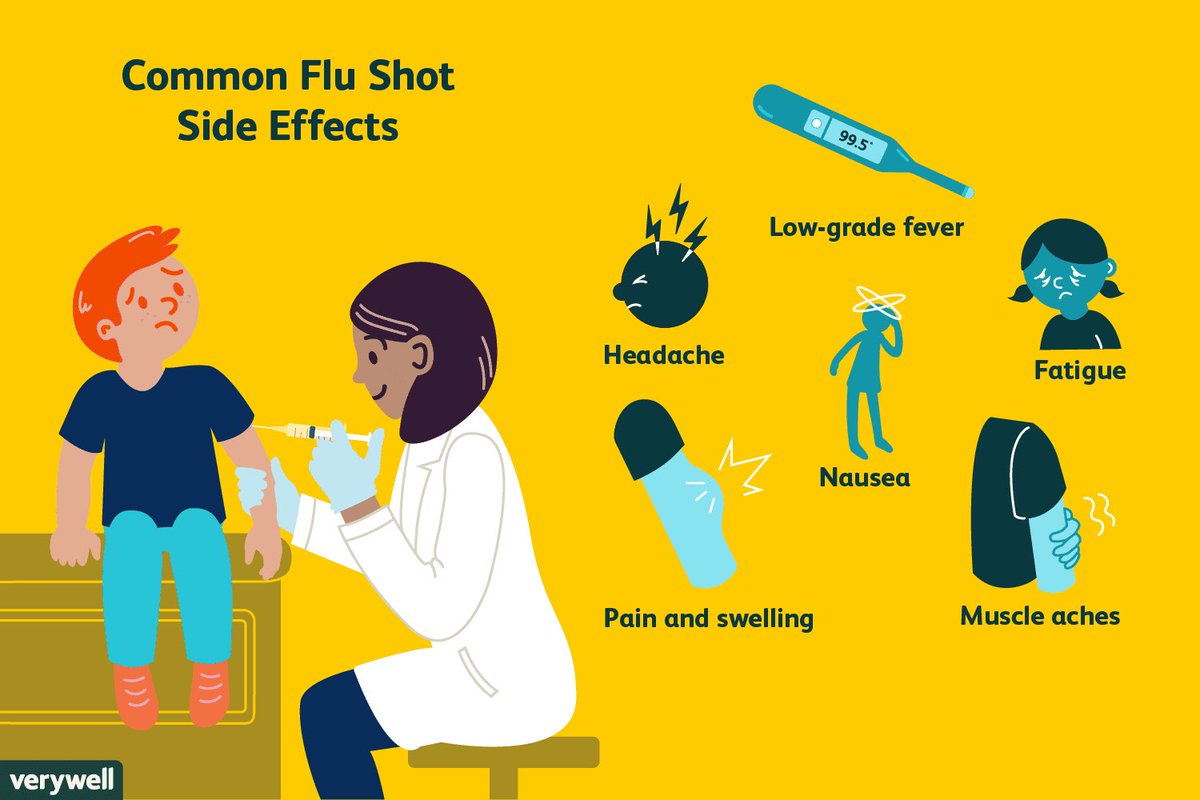 0003
0003
Causes of influenza and ways of transmission
The direct cause of influenza is the penetration of viruses into the body.
The influenza virus has several serotypes. Type A was first discovered in 1933, and type B influenza virus was identified in 1940. And 7 years later, type C was discovered. The difference between these serotypes is determined by the S-antigen, and the V-antigen, consisting of hemagglutinin and neuraminidase.
Type A is the most dangerous, because it constantly mutates and changes its antigenic structure. This feature is always taken into account by epidemiologists in order to predict which strain will be the causative agent of the disease in the current year. This information is important for doctors and patients to use the “correct” vaccine, that is, one that will produce immunity against the appropriate A-type strain.
The genetic material of the influenza virus is represented by a single strand of RNA. The outer surface of the virus is surrounded by a lipid membrane that contains hemagglutinin.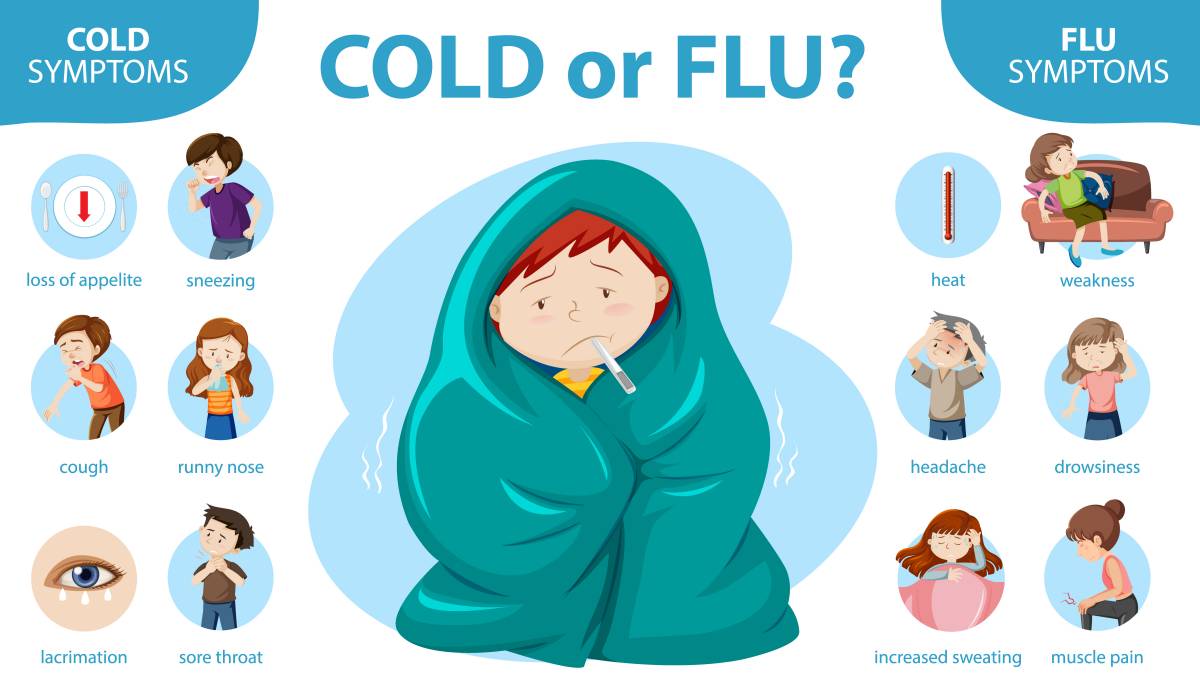 This substance determines the ability of the viral particle to penetrate into the host cell. After the viral copies have formed, they exit into the intracellular space. Neuraminidase is responsible for this process.
This substance determines the ability of the viral particle to penetrate into the host cell. After the viral copies have formed, they exit into the intracellular space. Neuraminidase is responsible for this process.
Infection with the virus occurs, as a rule, by airborne transmission. Sometimes infection can be carried out by household means, through household items. Viral particles that a sick person releases when talking or breathing can scatter to a distance of 2-3 meters from the source.
Get advice
If you experience these symptoms, we recommend that you make an appointment with your doctor. Timely consultation will prevent negative consequences for your health.
You can find out more about the disease, prices for treatment and sign up for a consultation with a specialist by phone:
+7 (495) 292-39-72
Request a call back
Book online
Why SM-Clinic?
1
Treatment is carried out in accordance with clinical recommendations
2
Comprehensive assessment of the nature of the disease and treatment prognosis
3
Modern diagnostic equipment and own laboratory
4
High level of service and balanced pricing policy
Instrumental and clinical diagnostics of influenza
In the general clinical analysis of blood with uncomplicated influenza, the level of leukocytes may decrease or remain within the normal range. Among all fractions of leukocytes, monocytes and lymphocytes are dominant, while the number of neutrophils and eosinophils is reduced. Erythrocytes settle to the bottom of the tube at a normal rate.
Among all fractions of leukocytes, monocytes and lymphocytes are dominant, while the number of neutrophils and eosinophils is reduced. Erythrocytes settle to the bottom of the tube at a normal rate.
Laboratory confirmation of infection is carried out by PCR, which detects RNA sequences specific to influenza. However, this study is not indicated for all patients, but only in controversial clinical cases.
If pneumonia is suspected, an x-ray or computed tomography of the chest is performed to assess the condition of the lung tissue. In severe infections, electrocardiography, a biochemical blood test, a coagulogram and other studies are also indicated.
Expert opinion
Once again, we will stop that antibiotics are not prescribed for a viral infection, because. for the realization of their action, they do not find a point of application. Antibiotics are only for bacteria. With influenza, these drugs are prescribed if bacterial complications have developed, in particular virus-bacterial associated pneumonia. The doctor will help you choose the optimal drug, taking into account the most likely spectrum of potentially dangerous bacteria. Uncontrolled use of antibiotics is dangerous, because. can lead to the development of antibiotic resistance both in a particular patient and on a global scale.
The doctor will help you choose the optimal drug, taking into account the most likely spectrum of potentially dangerous bacteria. Uncontrolled use of antibiotics is dangerous, because. can lead to the development of antibiotic resistance both in a particular patient and on a global scale.
Martishevskaya Evgenia Anatolyevna
Pediatrician, infectious disease specialist
Influenza Treatment and Clinical Guidelines
Mild to moderate influenza infections can and should be treated at home, but hospitalization is required for severe infections or complications.
Treatment of mild and moderate forms of influenza is carried out at home, severe and complicated forms – in a hospital. During the fever of a sick person, it is recommended to spend more time in bed, consume large volumes of liquids with a high content of vitamins (vitamins C and P are especially important during this period). Considering that the influenza virus can be accompanied by hemorrhagic syndrome, it is more rational to use paracetamol to stop the fever (non-steroids can lead to bleeding).
Treatment of severe forms of influenza involves the mandatory use of causal agents along with symptomatic and pathogenetic. Highly effective specific gamma globulin. Etiotropic therapy can be carried out by 2 classes of drugs: neuraminidase inhibitors and M2 blockers. Interferon preparations can also be used in multicomponent treatment, which are able to activate the immune system to destroy the causative virus.
Treatment of influenza during pregnancy
Pregnant women are at risk for infectious complications, therefore, in most cases, the use of drugs aimed at destroying the causative virus is indicated. With the development of influenza, it is important not to miss the time for the timely appointment of etiotropic therapy. World Health Organization experts recommend starting antiviral therapy within the next 2 days from the moment of illness. Such treatment may be given without the results of microbiological tests. Compliance with WHO clinical recommendations during pregnancy allows you to get a good therapeutic result.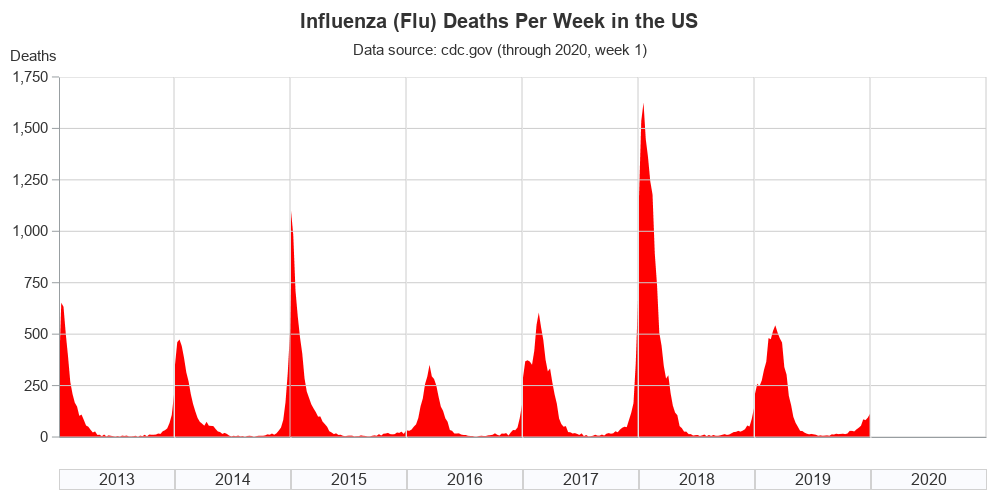 The complex of treatment also includes recombinant interferon, approved for use in pregnant women.
The complex of treatment also includes recombinant interferon, approved for use in pregnant women.
Influenza prophylaxis
Influenza is specifically prevented by vaccination. To do this, epidemiologists determine in advance which strain of the virus will cause the disease. The influenza vaccine is given to cover the 3 most common influenza viruses. Vaccines are divided into 2 categories – live and inactivated. Recently, inactivated vaccines, which contain only surface antigens, are more often used. To develop a therapeutic effect, immunization should be carried out in advance – 1-1.5 months before the planned outbreak of infection. This time is necessary for the immune system to have time to develop protective antibodies.
Non-specific influenza prophylaxis is:
- thorough handwashing, which may contain potential pathogens;
- rinsing the nose with saline;
- exclusion of staying in places of increased crowding of people (during an outbreak of influenza infection).

Questions and Answers
Examination and development of a treatment program is carried out by an infectious disease specialist. It can also be treated by a therapist (adult patients) and a pediatrician (children).
If possible, he should be allocated a separate room that needs regular ventilation. The patient is given his personal cup, spoon, fork, plate, towel and other care items. If possible, the number of contacts with healthy people should be kept to a minimum.
Clinical guidelines recommend that drugs be used to reduce body temperature in adults at 38.5°C and above, and in children at 39-39.5°C and above. However, there are exceptions to these rules that require the use of antipyretic drugs for less significant fever. This issue should be discussed with the doctor in advance.
Eganyan G., Groppa L., Fazylov V. et al. Treatment of ARVI and influenza in routine clinical practice. Doctor. 2014; 2:67–9.
Leneva I.A., Fedyakina I. T. Study of the antiviral activity of domestic anti-influenza chemotherapy drugs in cell culture and in animal models. Questions of virology. 2010; 55(3).
T. Study of the antiviral activity of domestic anti-influenza chemotherapy drugs in cell culture and in animal models. Questions of virology. 2010; 55(3).
Zapolskikh A.M., Lytkina I.N., Mikheeva I.V., Malyshev N.A. Clinical and epidemiological characteristics of influenza A(h2N1) pdm in pregnant women // Epidemiology and vaccination. 2014. No. 1 (74). pp. 66–73.
>
Diseases referred by Therapist
Avitaminosis
Anemia (anemia)
Bronchitis
Viral infection
Hemophilus infection
hypertension
Hypertensive crisis
Hypertension
Hypercholesterolemia
Low hemoglobin
Acute respiratory viral infection (ARVI)
Acute respiratory diseases (ARI)
Pneumonia
Tracheitis
Chronic gastritis
Chronic cholecystitis
Erosive gastritis
Diseases referred to Infectionist
Anisakidosis
Ankylostomiasis
Ascariasis
Balantidiasis
Blastomycosis
Brucellosis
Epstein-Barr virus
Viral infection
Viral hepatitis
Gastroenteritis
Gastroenterocolitis
Hemophilus infection
Genital herpes
Traveler’s diarrhea
Dysentery
Diphyllobothriasis
Diphtheria
Jaundice
Whooping cough
Rubella
All doctors
Sevastopolskaya metro station
Chertanovskaya metro station
Maryina Roshcha metro station
Voikovskaya metro station
Baltiyskaya metro station
Ulica metro station 1905
m.:max_bytes(150000):strip_icc()/what-you-should-know-about-h3n2-flu-770301-v1-5c1abe1446e0fb0001439b87.png) Yugo-Zapadnaya
Yugo-Zapadnaya
All doctors
Loading
Make an appointment with an infectious disease specialist
fields marked with * must be completed
Name
Telephone *
By clicking on the button, you consent to the processing of your personal data
Registration through the site is preliminary. Our employee will contact you to confirm the appointment with a specialist.
We guarantee non-disclosure of personal data and the absence of advertising mailings to the phone number you specified. Your data is necessary to provide feedback and arrange an appointment with a clinic specialist.
Licenses
Go to the section of licensesGo to the section of legal information
its types, duration and treatment with effective methods
Infection pandemics have affected mankind since time immemorial, but according to the annals, the first influenza pandemic dates back to 1580, after which epidemics were regularly mentioned by chroniclers with an interval of two to 13 years. And every year 15% of the world’s population are involved in the flu, and every thousandth sick person dies from complications of the disease.
And every year 15% of the world’s population are involved in the flu, and every thousandth sick person dies from complications of the disease.
Our expert in this field:
Serebryansky Yuri Evstafievich
Cardiologist, geriatrician, therapist, professor, Honored Doctor of the Russian Federation, MD
Call a doctor
Reviews about the doctor
Until 2013, three peaks of viral incidence were observed annually – in late autumn, winter and early spring, but at one time only one strain of the influenza virus caused the disease, then it was replaced by another. In recent years, strains A and B, several other “cold” viruses that cause ARVI, have been simultaneously circulating. Having had one infection, you can become infected with another strain and SARS within a month, and so on in a circle.
How long do people have the flu?
From 5 days to two weeks, depending on the infectious agent.
- It is believed that the first three days of clinical manifestations are only developing.
- The next three days are the “period of the acute phase”, when all the symptoms have reached their maximum development.
- In the second week, everything can end or complications begin, and this is the most critical time for the patient.
In the event of a disease, you should immediately contact an infectious disease doctor who sees you seven days a week and holidays at the international clinic Medica24. Early initiation of therapy will avoid irreparable consequences.
Over the course of a lifetime, a person will successfully endure the flu more than once, if his body does not develop an exaggerated response to the introduction of the virus – a “cytokine storm” that can lead to death.
How does the flu usually start?
It may take only a few hours from infection to the first symptoms, but in most cases – from 2 days to a week, this time is called the incubation period.
The disease always begins acutely, with little or no preparation. Just an hour ago, the man felt great and suddenly “fell down”. Suddenly, intoxication develops with chilling and severe headache, when it hurts even to open the eyes. Weakness grows, dizziness makes it difficult to move, all muscles and joints break. In a matter of minutes, the temperature exceeds the mark of 38 C.
Infection with B strain may begin gradually, but the symptoms are quite pronounced.
When do respiratory flu symptoms appear?
In contrast to acute respiratory viral infections with influenza, a runny nose does not appear earlier than the second day of illness, and in terms of intensity of catarrh of the upper respiratory tract, it is much inferior to the symptoms of intoxication. There is no abundant discharge from the nose, nasal congestion is pronounced, dry cough, perspiration and congestion behind the sternum prevail.
Influenza is characterized by a combination of three symptoms:
- Sudden onset;
- Severe intoxication;
- Fever with cough due to development of tracheitis.

Clinical symptoms of influenza B are more often manifested by chills and photophobia with lacrimation, runny nose and sore throat.
In an uncomplicated course, the symptoms of influenza in an adult are present for no more than 5 days.
The Medica24 international clinic conducts round-the-clock examinations using high-precision equipment, which allows you to quickly make the correct diagnosis and immediately start treatment for the influenza virus.
What does a person with influenza look like?
Very unimportant, from weakness he is unable to stand or sit. Face reddened, puffy. Lips are bluish or simply pale. The eyes are red and dilated small vessels are visible. Nosebleeds are possible, bruises are easily formed, and when the cuff of the tonometer is removed after measuring the pressure, then spider veins – petechiae – form in this place.
When should a patient’s condition be of serious concern?
Signs of a progressive course of influenza in adults when life-threatening symptoms develop and hospital treatment is required: sputum is streaked with blood.
If the symptoms described above worsen the course of the disease, you should immediately contact an infectious disease specialist who visits the international clinic Medica24 without days off and holidays, an appointment is made around the clock by phone +7 (495) 120-19-58. Early initiation of therapy will avoid irreparable consequences.
Take care of yourself, book a consultation now
Message sent!
wait for a call, we will contact you shortly
How often do complications occur?
The possibility of developing symptoms of complications of influenza depends on the aggressiveness of the viral strain and the initial state of health of the person. On average, in every seventh to tenth patient, as a rule, these are elderly patients burdened with chronic diseases and pregnant women.
On average, in every seventh to tenth patient, as a rule, these are elderly patients burdened with chronic diseases and pregnant women.
Viral pneumonia begins in the first three days of illness, viral-bacterial pneumonia develops by the end of the week, and tertiary bacterial pneumonia occurs in the second week of influenza.
Influenza B is characterized by ENT complications.
When does recovery take place?
No sooner than all the symptoms of intoxication disappear, there is not a single sign of inflammation of the upper respiratory tract, the temperature has been normal for three days. Weakness may still remain, but every day it will be less and less, and you will feel better.
The entire range of diagnostic procedures in the international clinic Medica24 is performed at a guaranteed high professional level, using the most effective domestic and foreign methods of therapy, which can significantly improve the quality of life of our patients and keep them active.
Self-confidence in case of illness is very expensive, get the help of an infectious disease specialist at the clinic for infectious diseases by calling: +7 (495) 120-19-58.
An influenza epidemic tends to move from east to west. The incidence of the population is accompanied by three bursts – peaks, the first occurs at the end of autumn and the beginning of winter, then during the New Year holidays and the third – at the border of winter and spring.
Which influenza pathogens cause epidemics?
Influenza is caused by three viruses: A, B and C. Only strain A is able to exist in humans, animals and birds, and all of them get the flu from time to time. Strains B and C are purely human inhabitants and are not found in any other animal world.
Today, infectious agents can circulate simultaneously, and in the same family or institution, some have influenza A, others B, and still others have SARS. After recovering from one infection, diseases caused by other strains can be transferred.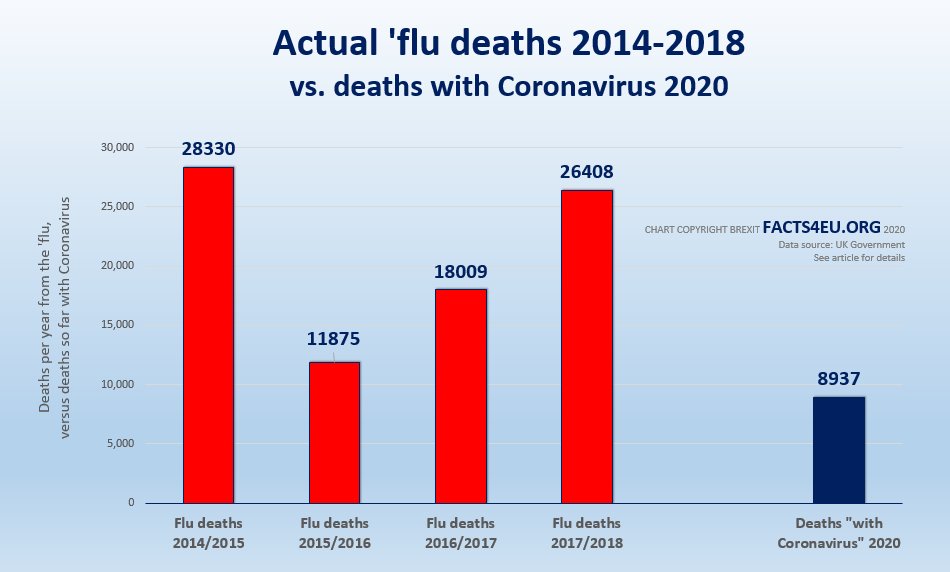
In the event of a viral disease, you must immediately contact the infectious disease specialist, who conducts appointments without days off and holidays at the international clinic Medica24, the appointment is made around the clock.
What is the name of the virus?
In 2016, the A(h2N1) virus circulated, causing a high incidence among middle-aged people. It is clear that A stands for strain, but what is h2N1?
Protein processes are located on the surface membrane of the causative agent of strain A to facilitate penetration into cells. Some processes consist of hemagglutinin (HA), a total of 18 variants of this protein have been found, which helps to penetrate into the erythrocyte. Other processes are represented by 11 types of the enzyme neuraminidase (NA), which helps the viral particle to get out of the cell.
According to the protein from which the processes are made, they began to designate subtypes of the virus. So the name A (h2N1) means that on the virus A of the strain there are spines from 1 subtype of hemagglutinin and 1 subtype of neuraminidase.
Do not hope that you have already suffered a viral infection many times and that you will avoid complications in the next epidemic. The body does not get newer, so the flu in youth is not at all the same as an infection in adulthood.
How does the influenza virus damage cells?
The virus is released with microscopic droplets of moisture during breathing, with sweat and saliva. The cause of the disease is the entry of a viral particle into the upper respiratory tract of a healthy person. With the help of HA processes, the infectious agent makes its way into the cell, where it starts the process of its division. New born particles already with the help of NA processes are selected from the cell to the outside.
A virus-affected cell produces protective inflammatory factors that should destroy the internal enemy, but in this deadly broth, called the “cytokine storm”, the cell itself dies. The released toxic products disrupt the biochemical processes in the cells of the heart, lungs, and brain, leading to an exacerbation of chronic diseases.:max_bytes(150000):strip_icc()/how-is-the-flu-diagnosed-770483_V3-33faae86c97749298f425df7e792f07a.png) After such an attack, immunity decreases, and then bacteria and fungi begin to attack.
After such an attack, immunity decreases, and then bacteria and fungi begin to attack.
We will call you back
Message sent!
wait for a call, we will contact you shortly
What can kill the influenza virus?
The virus is not very tenacious, depending on the microclimate, it remains viable for no more than 8 hours, frost and heat can cause its early death.
He cannot stand high temperatures either, for his death it takes a little more than 75 ° C, so it is enough to pour boiling water over the patient’s dishes and “fry” his linen with an iron.
The cause of unconditional viral death is the treatment of hands and surfaces with alcohol or hydrogen peroxide, ordinary soap and ultraviolet radiation. But iodine solutions of antiseptics do not work very actively, long contact and concentration are required.
Protection against influenza virus
The cause of the disease is getting the virus from droplets of the infected person’s saliva.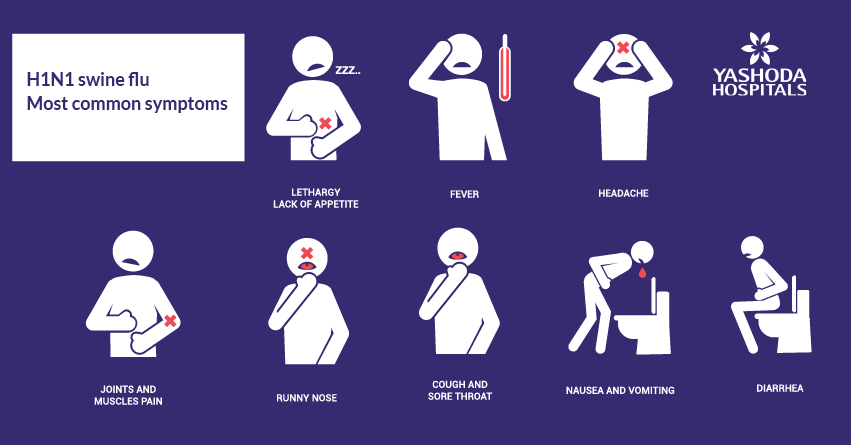 With a sick family member or in transport, not only airborne transmission is likely, but also a contact method with the transfer of an infectious particle with soiled hands to the face. The best way to protect yourself from severe flu and its complications is to get a flu shot.
With a sick family member or in transport, not only airborne transmission is likely, but also a contact method with the transfer of an infectious particle with soiled hands to the face. The best way to protect yourself from severe flu and its complications is to get a flu shot.
To reduce personal susceptibility to infection, one should:
- Lead a healthy lifestyle, ie do not overeat, sleep well, be physically active.
- If you have a chronic disease, you should be monitored by a doctor, because exacerbations reduce the body’s immune defenses.
- In the epidemic period, drug prophylaxis is also possible, especially when in contact with the patient. Drug emergency and seasonal antiviral prophylaxis has been developed, which increases the resistance of the human body to respiratory viruses.
If you have a chronic reason for reducing the body’s resistance, have had contact with a sick person, or simply want to increase the body’s resistance to an infectious agent, the specialists of the Medica24 international clinic will select an individual preventive program. Contact an infectious disease specialist at our clinic for infectious diseases for help, call: +7 (495) 120-19-58.
Contact an infectious disease specialist at our clinic for infectious diseases for help, call: +7 (495) 120-19-58.
Most people consider every cold to be the flu, “I have the flu” – they say with a severe runny nose with lacrimation and malaise. Whereas the flu is far from being ill every year, but several times a year they carry a variety of respiratory viral infections.
In the international clinic Medica24, not only in the shortest possible time and at minimal cost, they will establish the correct diagnosis, but also carry out the optimal treatment of the influenza virus according to international clinical standards, taking into account the individuality of your body.
Laboratory diagnostics for influenza
Diagnosis of a viral disease in adults is not difficult, it is enough to have a medical examination, without analysis to identify a specific pathogen. During the epidemic season, certain strains circulate – types of influenza viruses, and by and large, it is enough for any patient to carry out adequate treatment and put him on his feet, and it does not matter to him which strain has damaged his health.
Influenza infection is supported by:
- specific clinical picture;
- increased incidence of viral respiratory infections and influenza in the surrounding population;
- disease in the epidemic season by infection;
- World Health Organization predicted pathogen.
When does the doctor prescribe a diagnosis?
Diagnosis of the pathogen is carried out during hospitalization in case of severe infection and the development of complications. The virus is searched for by complex laboratory methods:
- In any secret – excretion of a patient, no matter in blood or saliva, the polymerase chain reaction (PCR) method detects a particle of the genetic apparatus of the virus – RNA.
- Blood is taken for the hemagglutination inhibition test (HAIT), which detects antibodies to the virus.
- Enzyme-linked immunosorbent assay (ELISA) and immunofluorescent microscopy method reveal signs of the presence of the virus – antigens in the wash from the mucous membrane.

If you have symptoms of a respiratory viral infection, do not try to diagnose yourself. Many serious diseases at the beginning of development proceed under the mask of influenza.
Get a remote consultation with a doctor
Message sent!
expect a call, we will contact you as soon as possible
Effective prevention of influenza
Every year by the beginning of autumn, WHO announces which strains of the pathogen will cause the disease in winter and pharmaceutical manufacturers begin to prepare certain vaccines. Vaccination is not required for everyone, and those who are associated with the sick at work, or work in children’s groups, can contribute to the spread of infection among frail older people. Studies have shown that vaccination is the best prevention of a serious illness and its complications, and actually reduces the mortality rate.
Vaccination is carried out either with the whole virus or with its particles, and causes the formation of immune defenders in the body.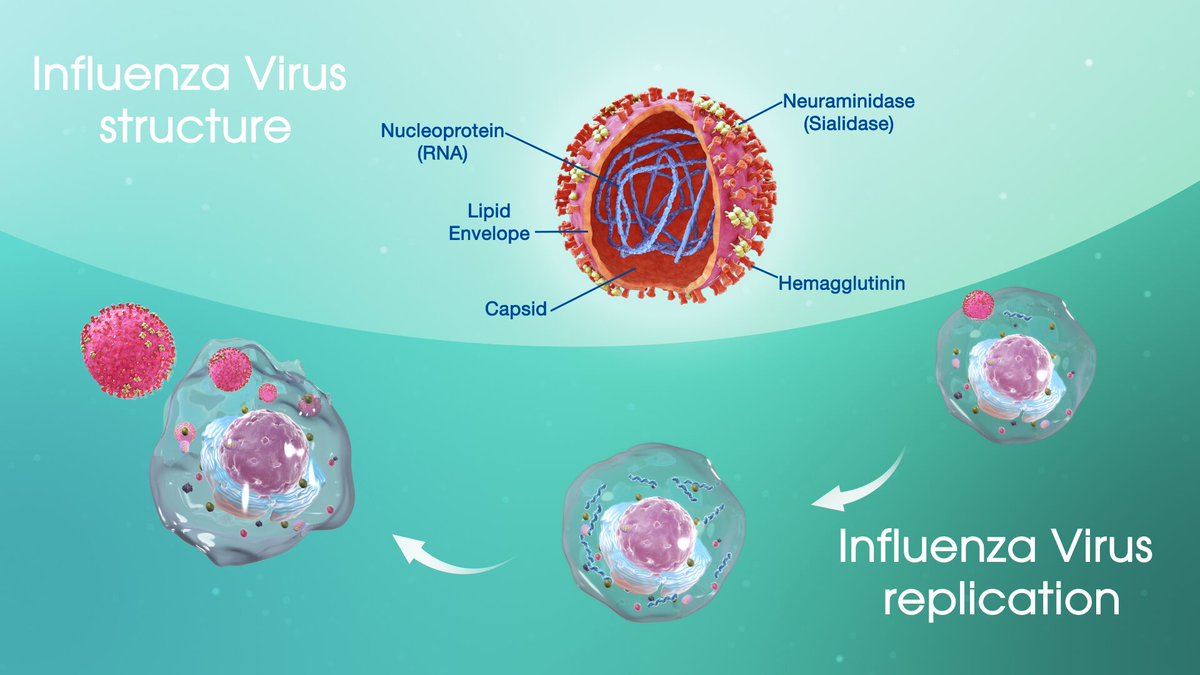 Live vaccines are the most effective, but they also cause more complications. Drugs with a weakened-inactivated virus cause a limited protective reaction, but are better tolerated. Vaccinal immunity occurs by the end of the second week and lasts for several months.
Live vaccines are the most effective, but they also cause more complications. Drugs with a weakened-inactivated virus cause a limited protective reaction, but are better tolerated. Vaccinal immunity occurs by the end of the second week and lasts for several months.
Only a doctor from the whole variety of vaccines can choose the best drug for you, taking into account possible complications, and predict the optimal immune response. This will not take much time, but it will protect you from the complications of the infection. Contact your doctor at the Center for Infectious Diseases. Make an appointment with an infectious disease specialist: +7 (495) 120-19-58
How to prevent flu and colds if one of the family members falls ill?
If a sick person with influenza or SARS appears in the family, it is necessary:
- Separate him in a room or at least behind a screen so that healthy family members are not surrounded by a meter;
- Ventilate and mop floors and furniture daily;
- After washing, pour boiling water over the patient’s dishes;
- Wash hands almost up to the elbow after touching the sick person;
- Throw away the mask after 2 hours of wear.

Family members can start prophylaxis with influenza medications.
Your doctor may recommend prophylactic medications. They are selected individually. Some of these drugs have serious side effects, so you should never self-medicate.
Proper diagnosis allows you to prescribe optimal treatment and keep the disease under control, in the international clinic for infections Medica24 The full range of complex examinations is performed. Make an appointment with an infectious disease specialist at a convenient time for you by calling +7 (495) 120-19-58.
Treatment of adult patients with influenza consists of compliance with the regimen and nutrition, drug therapy.
Each year, in the run-up to an epidemic, WHO announces which viruses will be circulating, which vaccines are effective and what should be taken. For the result, regardless of the type of strain, you should take:
- Anti-influenza medicines that stop the reproduction of a viral agent and reduce its circulation in the blood;
- Additionally, anti-inflammatory drugs are needed to prevent cells from overreacting to the virus – suppression of the “cytokine storm”;
- And it is also necessary to remove intoxication in order to limit the formation of free radicals that change the structure of the virus and increase its aggressiveness;
- To prevent the onset of bacteremia, start taking antibacterial agents on time.


 It can also reduce serious flu complications, too. These antiviral drug options can be particularly helpful for those who may have a serious underlying health concern. Remember, antibiotics won’t help the flu.
It can also reduce serious flu complications, too. These antiviral drug options can be particularly helpful for those who may have a serious underlying health concern. Remember, antibiotics won’t help the flu. Nasal strips may also make you feel more comfortable if you’re congested.
Nasal strips may also make you feel more comfortable if you’re congested.

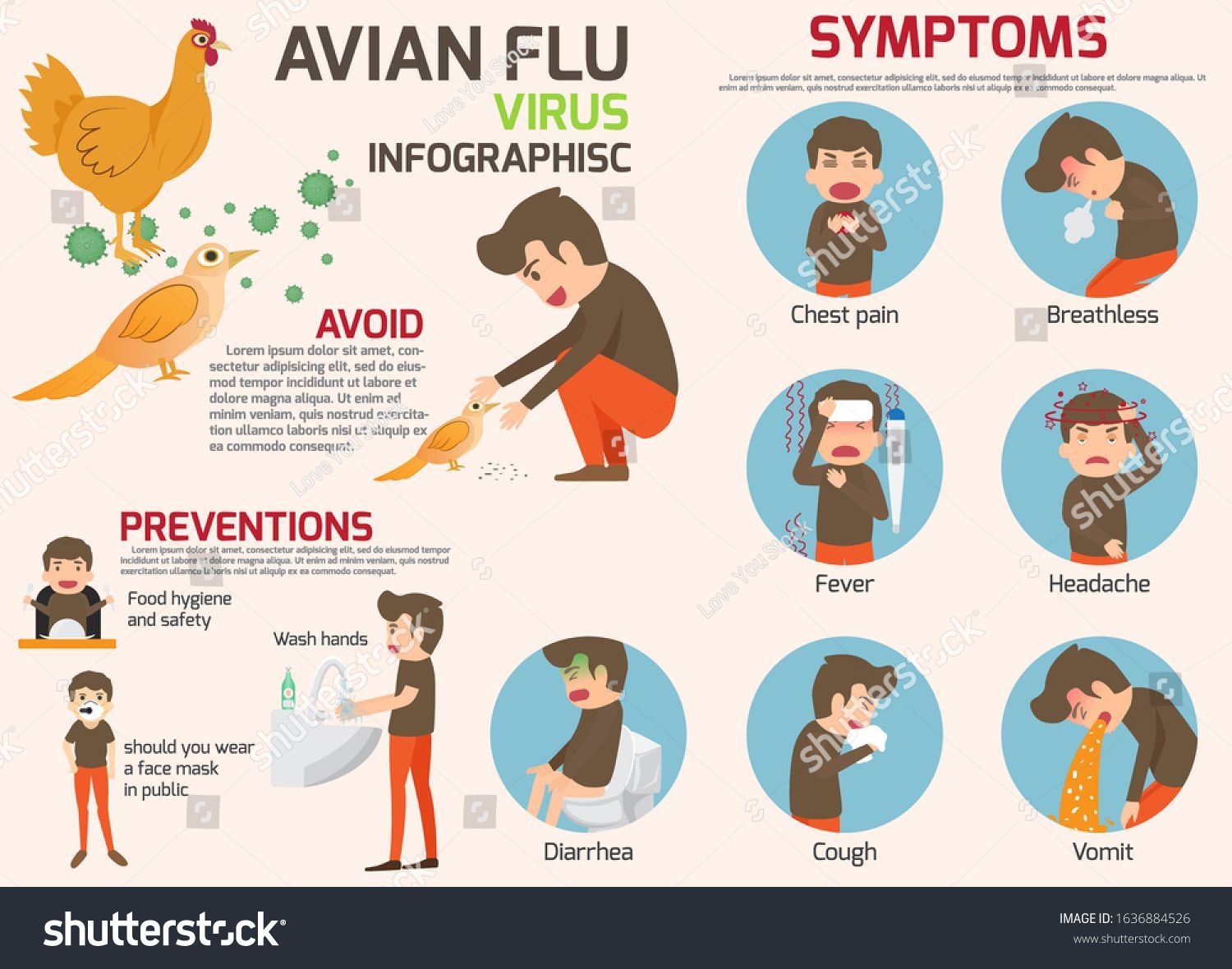
 The period during which adults are contagious is usually around 3–5 days from when the first symptoms appear, and up to 7 days in younger children.
The period during which adults are contagious is usually around 3–5 days from when the first symptoms appear, and up to 7 days in younger children.
 The combination of the flu and aspirin in this age group has been known to cause Reye’s syndromeExternal Link – a very serious condition affecting the nervous system and liver.
The combination of the flu and aspirin in this age group has been known to cause Reye’s syndromeExternal Link – a very serious condition affecting the nervous system and liver. Place the bowl on a steady surface, such as a table. Put a towel over your head and inhale the warm air in the bowl for up to 20 minutes. There is no need to add anything to the water. Be careful not to touch the water and keep it out of reach of children.
Place the bowl on a steady surface, such as a table. Put a towel over your head and inhale the warm air in the bowl for up to 20 minutes. There is no need to add anything to the water. Be careful not to touch the water and keep it out of reach of children.:max_bytes(150000):strip_icc()/stomach-flu-symptoms-770657-86-310db9fd0f1543e289250a64c8384d58.png)
 With one of them, the severity is determined by systemic intoxication of the body, and with the other – by serious pulmonary complications.
With one of them, the severity is determined by systemic intoxication of the body, and with the other – by serious pulmonary complications.